If you are in a role where you make decisions and solve problems then you’ll be interested in design sprints. In 2019 I was invited to the Google Design Sprint Conference. As part of my research on how design thinking can be used in K12, I was interested in learning how enterprise was applying the strategies and mindsets. Through this work, I was introduced to Kai Haley, who led the Sprint Master Academy at Google.
How Leaders Use Design Sprints to Collaborate, Solve Problems and Make Decisions
TL;DR
We’re all grappling with how to best design teaching and learning experiences for today’s learners. If we want to move from ideas to impact how we design that conversation matters even more. In this article I share how to design inclusive conversations that solve challenges, and explore opportunities in schools by condensing months of work into a few days. Through this experience you’ll continue building a culture of trust and safety, encouraging creativity, and inspiring a collective vision.
To facilitate this experience you’ll need:
- The deck to facilitate the experience here which includes step by step directions for each stage.
If you have questions about facilitating the experience reach out to me here.
From Pockets of Innovation to Cultures of Innovation
The design sprint was created by Jake Knapp who wrote the NYT Bestseller, “Sprint: How to Solve Problems and Test Ideas in Five Days.”
The design sprint compresses potentially months of work into a few days. It allows for rapidly solving big challenges, creating new programs, or improving existing ones. It addresses the core challenges we often experience when designing change such as alignment on objectives across all partners, lack of clarity around goals, and the pressure to be “innovative” without an understanding of how. Addressing these and creating alignment, clear goals, and a culture of trust and safety, will allow schools to move from pockets of innovation to cultures of innovation.
A key differentiator in why the design sprint methodology is it eliminates one of the greatest frustrations when working on projects – endless discussion that often leads to more meetings. People feeling drained, and outcomes not being achieved in a timely manner. We don’t have Zoom fatigue, we have endless meeting fatigue. A challenge solved with the design sprint methodology.
Five Elements that Nurture a Culture of Innovation
When thinking about designing change in your organization there are five areas to consider to create a culture of innovation:
- Build a culture of trust and safety
- Identify and solve problems
- Make decisions with teams
- Encourage creativity, collaboration, and risk taking
- Inspire a collective vision
In working with leaders on accelerating innovation in education and enterprise, I’ve learned that cultures of innovation begin with a culture of empathy. It’s this emphasis on empathy that drew me to design thinking. Beginning with empathy allows us to achieve the first goal. It’s to build a culture of trust and safety, encouraging us to design with people, not for them.
What I appreciate most about design thinking is the mindsets that it nurtures. IDEO best categorizes these as: empathy, creative confidence, comfort with ambiguity, learning from failure, making, iterating, and optimism.
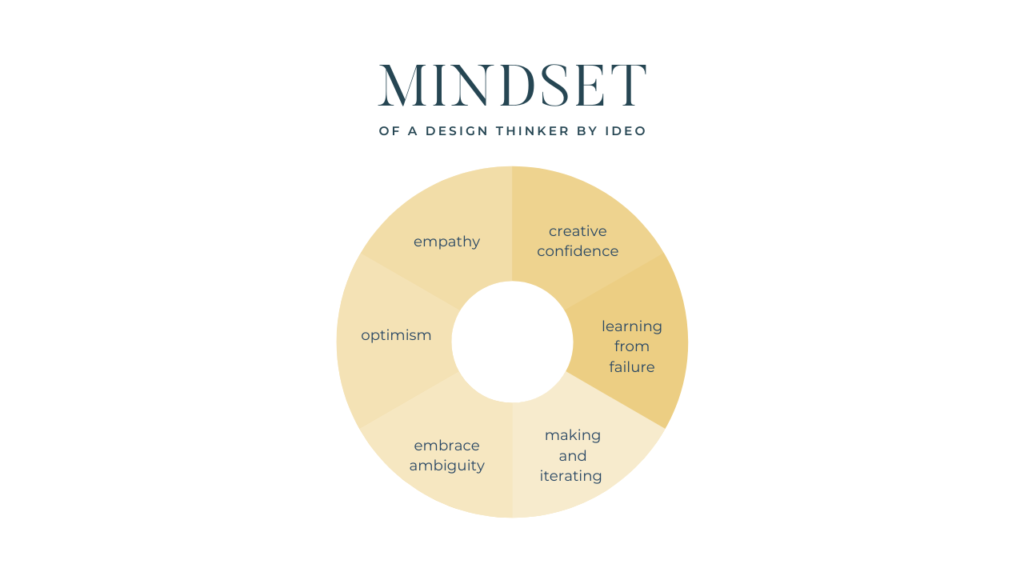
As an organization focused on advancing specific initiatives, you need a more structured approach. This is where design sprints provide immense value. With design thinking we solve for the first area – building a culture of trust and safety with empathy. Through the design sprint we are able to focus on the remaining areas – identify and solve problems, make decisions with teams, encourage creativity and risk taking.
How Education Leaders Can Use Design Sprints
When we think about designing schools to be more relevant for today’s learners we have to consider initiatives such as professional development to assessment to teacher collaboration, and everything in between. To solve for the challenges we face, and the opportunities we want to embrace, the design sprint provides a more structured approach to moving from ideas to impact.
This past week I had the privilege of leading a workshop, “Designing Schools: From Trust to Transformation,” for education leaders across California. At a time where the education industry is facing significant challenges, burnout, and numerous other challenges, there was an unwavering commitment to learning how to navigate change and build cultures where everyone thrives.
During the workshop I shared the steps a leader can take to align their teams and accelerate innovation within their organization. The slides are designed for you to be able to facilitate the experience with your team. You can download them here and keep reading for a workshop recap.
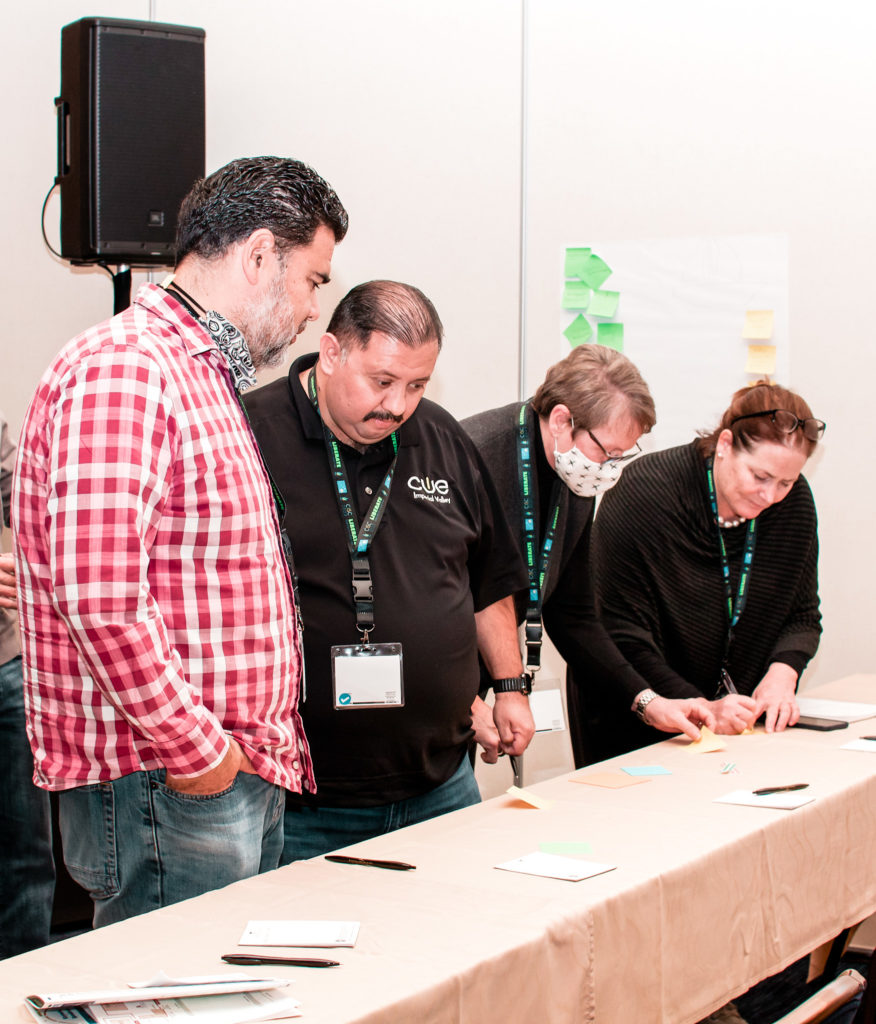

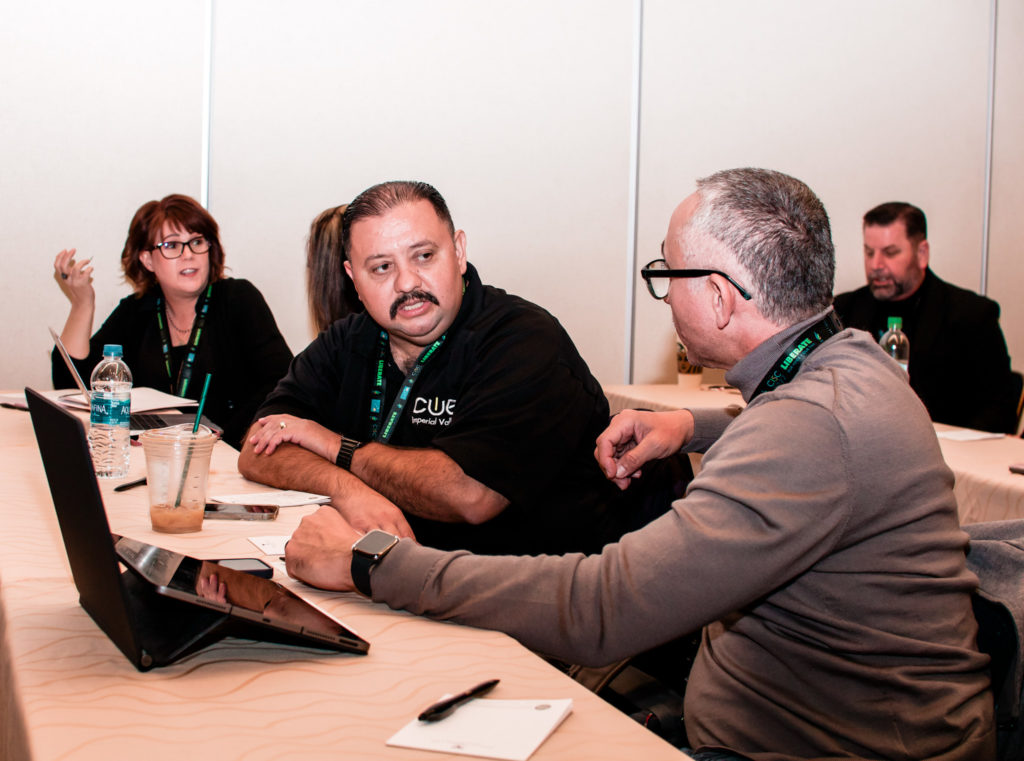
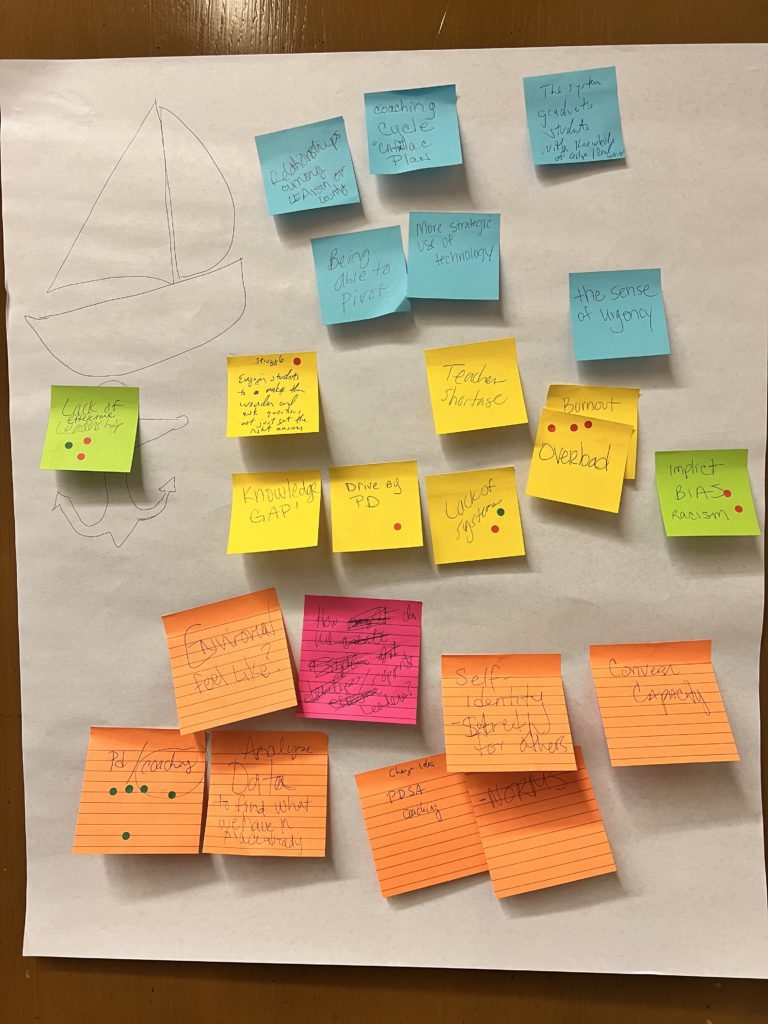
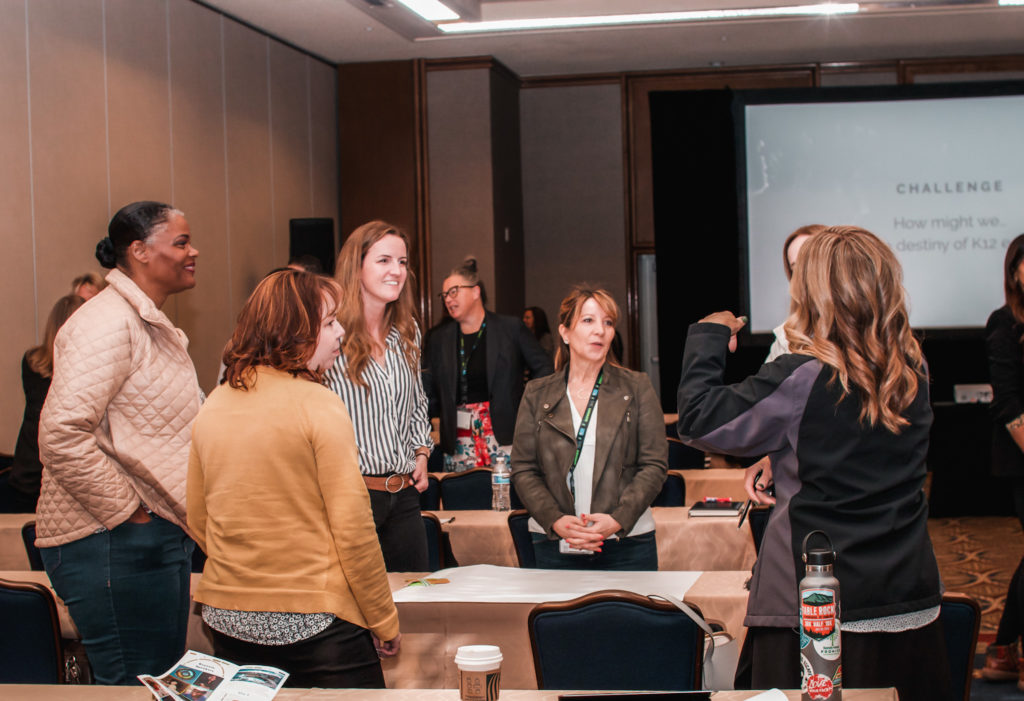
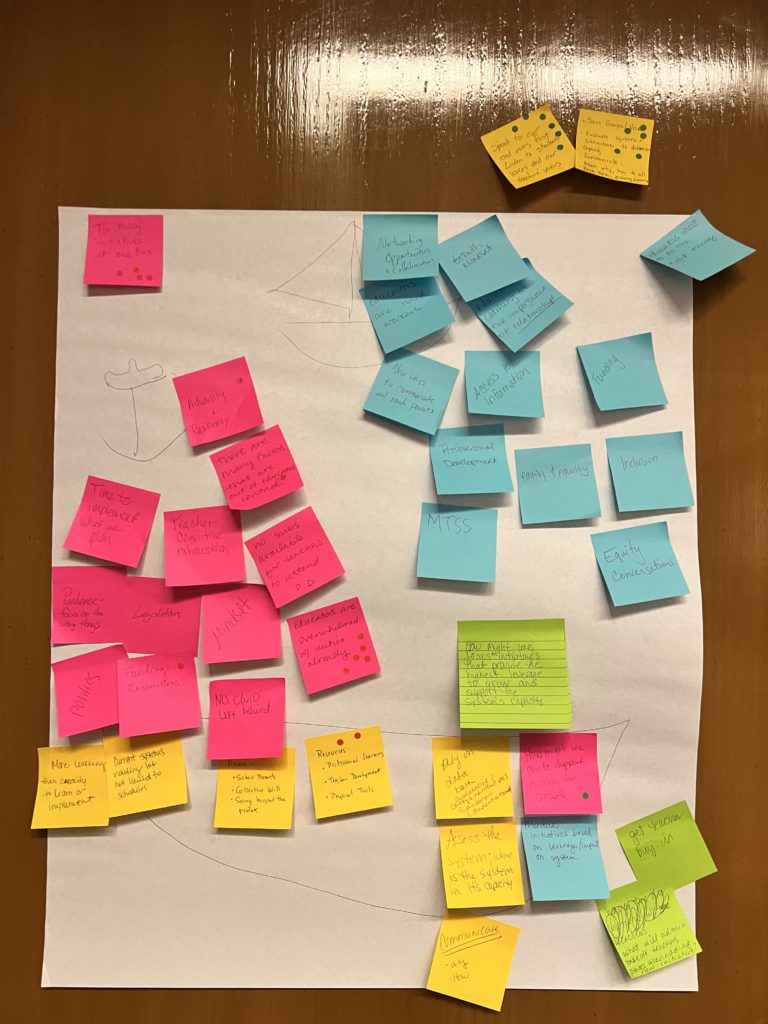
Workshop Overview
The workshop consists of a series of exercises aligned to the five areas that cultivate a culture of innovation.
Part 1: Build a Culture of Trust and Safety
Exercise #1: Assess your Culture of Psychological Safety
From conference presentations to our own personal reading, we spend a lot of time talking about the why when it comes to education reform. However, to move beyond the why, we need the tools to guide the often-uncomfortable conversations about what we’ve learned. And how we want to move forward. When collaborating we immediately jump to creating solutions, however in order to do so, we need to feel safe sharing ideas or sharing concerns.
In 2012 Google launched Project Aristotle, a study where they wanted to learn what qualities make great teams. The number one quality they found was “psychological safety.” This is why we begin with an understanding of the work and survey developed by Amy Edmonson, Professor at Harvard Business School. Psychological safety is a belief that one will not be punished or humiliated for speaking up with ideas, questions, concerns or mistakes.
The survey designed by Amy Edmonson consists of 7 questions. You can create this survey in any tool and use the scale, “Sometimes, Often, Never.”
- If you make a mistake on your team, is it held against you?
- Are you able to bring up problems and tough issues?
- Do people on the team sometimes reject others for being different?
- Is it safe to take a risk?
- Is it difficult to ask other team members for help?
- Do people on the team deliberately act to undermine your efforts?
- Are your unique skills and talents valued and utilized?
Exercise #2: The All-In Method
The next exercise we examine is the All-In Method from the book, “Radical Alignment: How to Have Game Changing Conversations That Transform Your Business and Life. If you listen to the podcast you’ll remember this framework from my conversation with authors, Bob Gower and Alexander Jamieson. The framework is divided into four quadrants – Intentions, Concerns, Boundaries and Dreams. Time and time again, teams who begin with this framework share how the energy between everyone shifted and we hear things like:
- We feel like we can lean on each other
- Also, we didn’t realize how capable this room was
- We feel bonded as a team in a new way
One person even said something so beautiful which was – “my only concern is that we never go back to the way we were before, that we be intentional about keeping this bond.”
Exercise #3: Assessing Our Strengths
We’re all great at something but we can’t be great at everything. Self awareness is the foundation for recognizing your strengths, limitations, values, and skills. When we learn what energizes people we are working with we become indispensable to each other as we work towards your goals. We know who to best delegate tasks to. We can better empathize when people are struggling. Ultimately, we experience more joy in how we work.
There are many different types of strengths assessments, I’ve shared two that I recommend. Each is valuable and I recommend starting with Sparketype and moving to Clifton Strengths.
Recommendations
- Sparketype (free) – designed by Jonathan Fields of the Good Life Project.
- Clifton Strengths (paid) – designed by Gallup.
Part 2: Solve Problems, Explore Opportunities, and Make Decisions
Exercise #4: A Mini Design Sprint
Once we have a foundation amongst teams, we’re ready to actually examine the project at hand. This is where we begin with a short introduction to the design sprint methodology. The design sprint is more than a framework. It’s a tried and true method of collaborating to ask questions, solve challenges, and make decisions. You can read about the case studies about the impact the sprint has had on organizations around the world here.
This activity synthesizes the types of activities you do during a design sprint, that allows people to see the value. A design sprint is a multi-day commitment. And it’s hard to believe that in a few days you’ll have the outcomes it promises.
This exercise takes about 90-120 minutes. So, you begin by examining challenges and opportunities, prioritizing your focus area, generating ideas, and designing an action plan moving forward. Through this experience you’re creating a culture of innovation that begins with empathy. Also, a culture where designing change is inclusive, intentional, and manageable.
Reflection
Exercise #5: I Used To Think… And Now I Think…
I have found this to be one of the simplest, yet powerful exercises to debrief how people feel about their experience in just one sentence, “I used to think… and now I think…” So, here are a few reflections from the workshop after going through the experience:
- I used to think I was pushing a rope uphill and feeling pessimistic. Now I think using design sprints will help my team build trust and be proactive.
- I used to think people pushed their agenda and now I think that is still true. However, this practice allows everyone to give input and encourages listening. Also, it brings forward what the group wants
- I used to think it was overwhelming, and now I think I have a game plan.
- Also, I used to think that it was just one person leading the change. Now I think that there are structures to bring teams together for change
There’s 75 more sentiments that are relatively similar. Also, there were two themes across the reflections – moving from feeling overwhelmed, to having a plan, and moving from designing change in isolation to designing change with teams.
I’m Sabba.
I believe that the future should be designed. Not left to chance.
Over the past decade, using design thinking practices I've helped schools and businesses create a culture of innovation where everyone is empowered to move from idea to impact, to address complex challenges and discover opportunities.
stay connected
designing schools